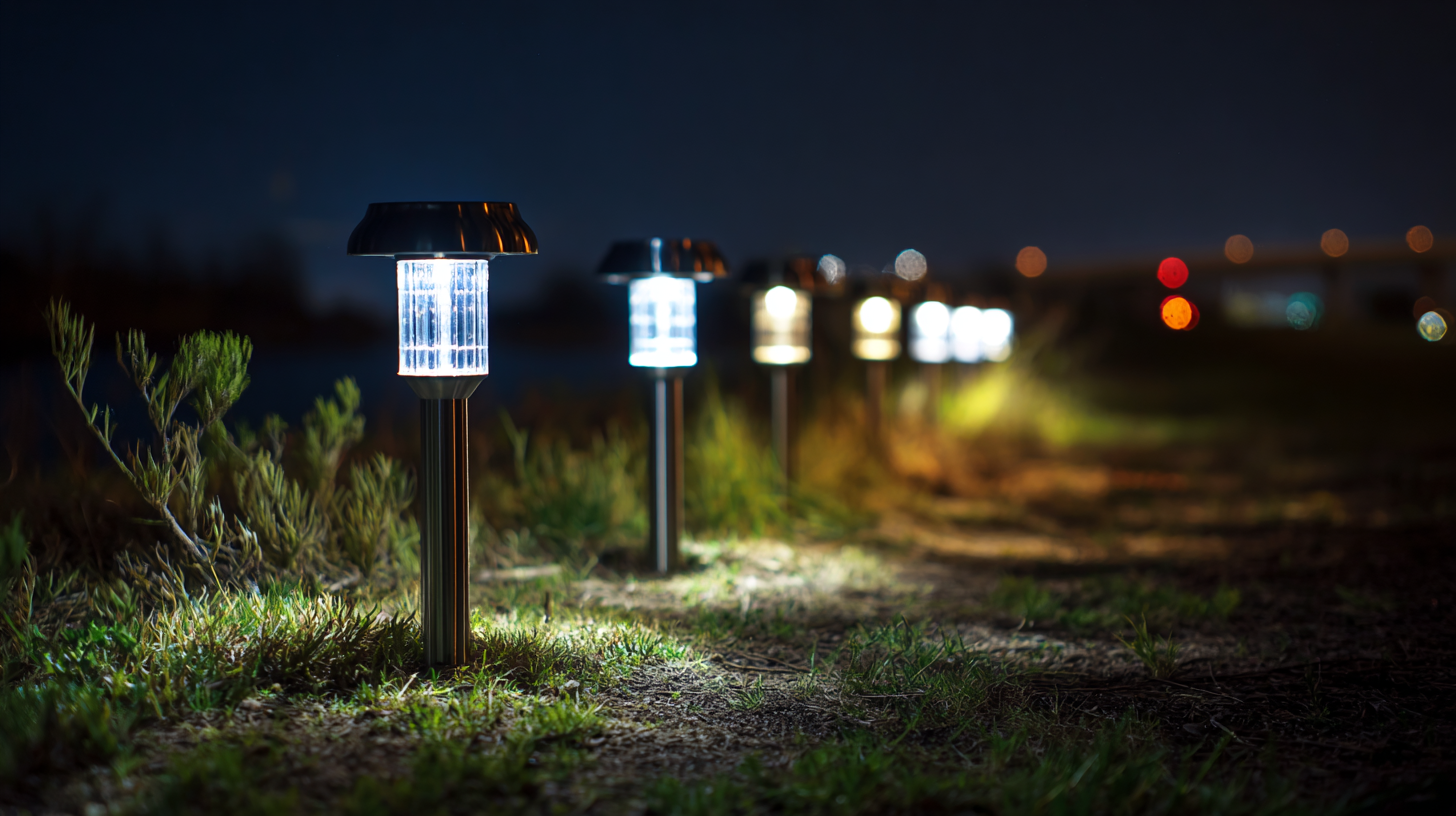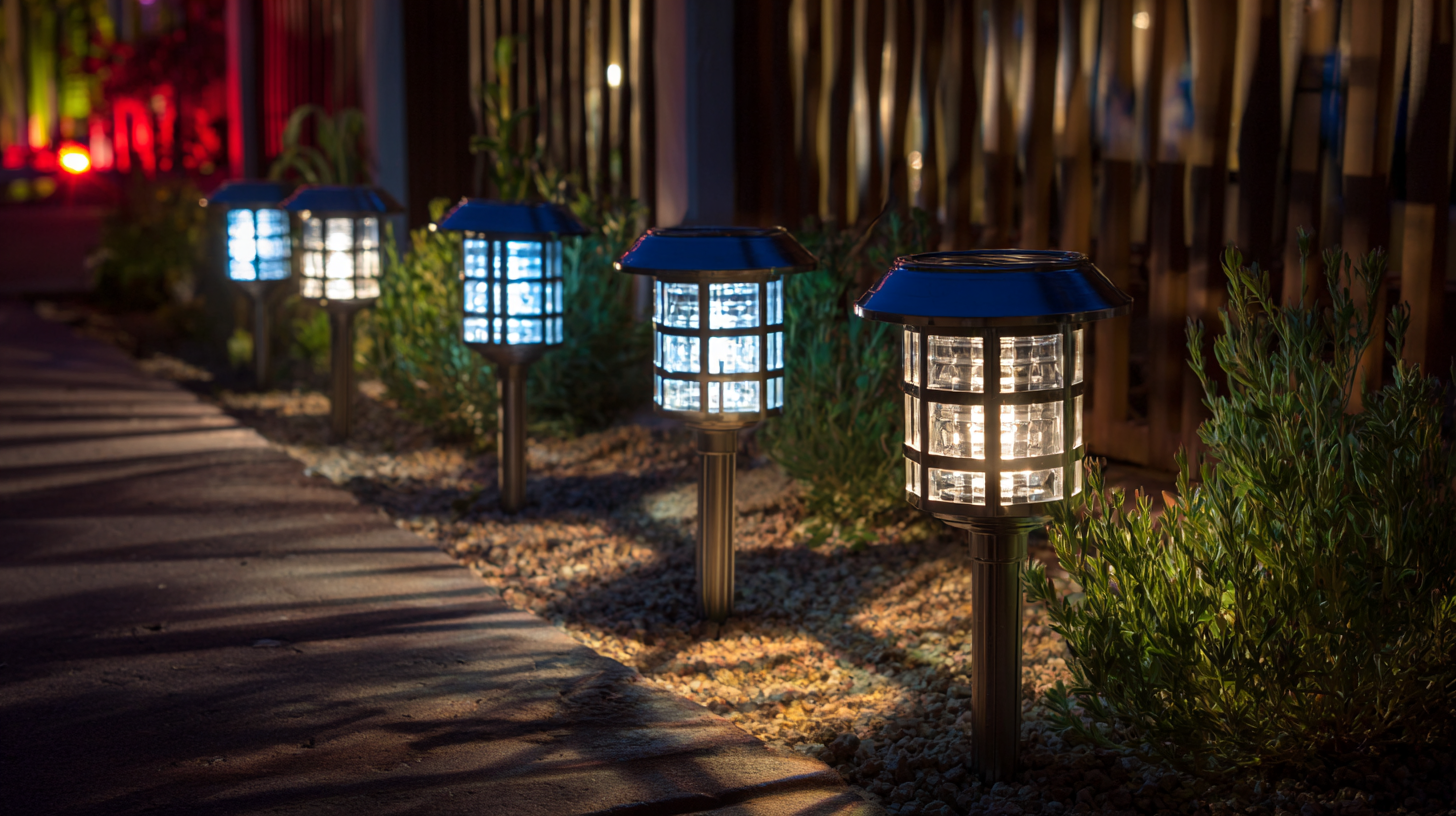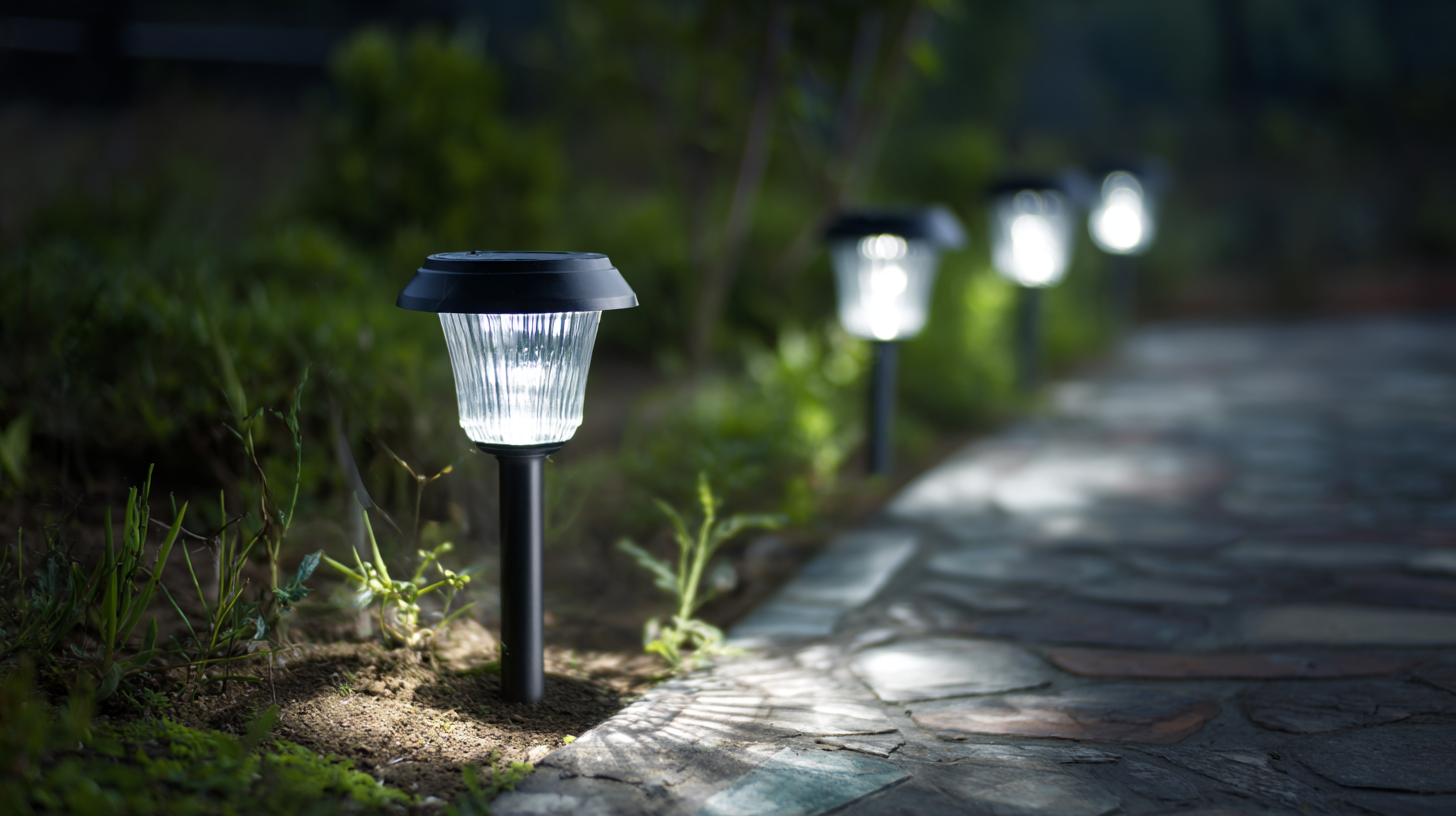Ultimate Comparison of the Best Solar Lights: Finding the Perfect Fit for Your Outdoor Needs
As outdoor lighting solutions continue to evolve, solar lights have emerged as a popular and eco-friendly option for homeowners looking to enhance their exterior spaces. According to a report by Grand View Research, the global solar lighting market size was valued at approximately $3.6 billion in 2020 and is expected to expand at a compound annual growth rate (CAGR) of 13.2% from 2021 to 2028. This remarkable growth is driven by advancements in solar technology and an increasing focus on sustainability and energy efficiency.
With various designs, brightness levels, and functionalities available, choosing the right solar lights can significantly impact both the aesthetics and security of your home. In this ultimate comparison, we will explore the key technical specifications and features of the best solar lights on the market, helping you find the perfect fit for your outdoor needs.
Key Trends in the Solar Lighting Industry: Market Insights for 2025
As we look toward 2025, the solar lighting industry is poised for significant evolution, driven by advancements in technology and growing consumer demand for sustainable solutions. One of the most notable trends is the integration of smart technology into solar lights. With features like remote controls, motion sensors, and app connectivity, users can easily manage their outdoor lighting systems while enhancing security and convenience. These innovations not only improve user experience but also contribute to energy efficiency by allowing consumers to personalize their lighting options based on real-time needs.
Another key insight is the increasing focus on durability and performance. Manufacturers are prioritizing high-quality materials and advanced solar panels that withstand harsh weather conditions, ensuring longevity and reliability. As environmental consciousness grows, more consumers are seeking reliable products that offer both aesthetic appeal and functional performance in outdoor spaces. This shift is likely to shape product offerings, leading to a range of solar lights that cater to different styles and preferences while also promising minimal impact on the environment. Overall, the solar lighting market is evolving into a sector that harmonizes technology, sustainability, and design.
Understanding Different Types of Solar Lights: A Comprehensive Overview
When it comes to illuminating your outdoor spaces, understanding the different types of solar lights is crucial for making the right choice. Solar lights come in various forms, from string lights and walkway lights to floodlights and decorative lanterns. Each type serves a unique purpose, catering to different needs and aesthetic preferences. For instance, pathway lights enhance the safety of your outdoor walkways, while decorative string lights add a charming ambiance to social gatherings or quiet evenings in the garden.
Tips: Consider where you'll be placing your solar lights before making a purchase. If you're lighting a pathway, opt for ground-mounted lights that are bright enough to illuminate your steps but not too harsh. For ambient lighting, choose decorative options that complement your outdoor decor. Always check the battery life and brightness level when selecting solar lights, as these factors significantly impact their performance and suitability for your space.
Another factor to consider is the climate in your area. In regions with prolonged rainy seasons, look for solar lights with weatherproof ratings to ensure durability. Additionally, be aware of the charging time required; some lights may need full sunlight to charge efficiently, so placement is key. Remember, selecting the right type of solar light not only enhances the beauty of your outdoor area but also improves safety and usability for evening activities.
How to Choose the Right Solar Lights for Your Outdoor Space
When selecting the right solar lights for your outdoor space, consider your specific needs and the functionality you desire. Solar lights have gained popularity thanks to advancements in technology that not only make them environmentally friendly but also cost-effective. With the portable lamp market projected to reach $1.43 billion by 2024 and grow steadily thereafter, outdoor lighting solutions are more accessible than ever.
Tips for choosing the right solar lights include evaluating the brightness level measured in lumens, ensuring they have a good energy conversion rate, and assessing the expected battery life. Look for solar lights that charge efficiently during the day and provide sufficient illumination at night. This will help you create a well-lit environment for your outdoor activities without worrying about energy costs.
Additionally, consider the design and placement of the lights. Choose styles that complement your outdoor decor while positioning them in areas where they can maximize exposure to sunlight. By focusing on functionality and aesthetics, you can enhance your outdoor spaces and enjoy their benefits all year round.
Ultimate Comparison of the Best Solar Lights
| Type |
Brightness (Lumens) |
Battery Capacity (mAh) |
Charging Time (Hours) |
Runtime (Hours) |
Water Resistance |
Price Range (USD) |
| Wall Light |
300 |
2200 |
6 |
8 |
IP65 |
30 - 50 |
| Pathway Light |
150 |
1200 |
5 |
6 |
IP44 |
20 - 40 |
| Spotlight |
500 |
2600 |
8 |
10 |
IP67 |
40 - 70 |
| String Lights |
100 |
1000 |
4 |
6 |
IP65 |
25 - 45 |
Innovative Features in Modern Solar Lights: What to Look For
When selecting solar lights for outdoor use, it's essential to consider innovative features that enhance functionality and energy efficiency. According to a report by MarketsandMarkets, the global solar lighting market is expected to reach
$12.53 billion by 2026, fueled by advancements in technology and increasing awareness of renewable energy sources. Modern solar lights now come equipped with
motion sensors, which enable them to brighten upon detecting movement. This feature not only conserves energy but also enhances security, making solar lights a smart choice for homeowners.

Another noteworthy innovation is the integration of smart technology, where solar lights connect to mobile applications. A study by Grand View Research found that the smart outdoor lighting market is expected to grow significantly, driven by the rising trend of home automation. This capability allows users to control their lighting remotely, adjust brightness levels, and set schedules according to their lifestyle. Additionally, features such as adjustable color temperatures and built-in battery storage for longer illumination hours are becoming more prevalent, providing consumers with
customizable options that fit their unique outdoor needs.
Cost-Benefit Analysis: Are Solar Lights Worth the Investment?
The cost-benefit analysis of solar lights emphasizes their growing appeal as a
sustainable lighting solution. According to a report by the International Energy Agency (IEA), solar lighting can reduce
energy consumption by up to 80% compared to traditional incandescent bulbs. This statistic
highlights not only the environmental benefits but also significant cost savings over time.
With the average residential electricity rate currently around $0.13 per kWh in the
United States, switching to solar lights can lead to a substantial decrease in one's monthly electric bill.
Additionally, a market analysis by Grand View Research projected that the global solar lighting market would reach
$10.3 billion by 2025, growing at a compound annual growth rate (CAGR) of
20.5%. This surge in demand is fueled by consumers’ increasing desire for
energy-efficient alternatives that also provide safety and convenience in outdoor spaces. While the initial investment may seem steep—
solar lights can range from $20 to over $200—they typically pay for themselves
within 2-3 years through reduced energy costs and long-lasting performance.
With many models offering LED technology that lasts up to 25,000 hours,
it's clear that the investment in solar lights is often justified in the long run.



